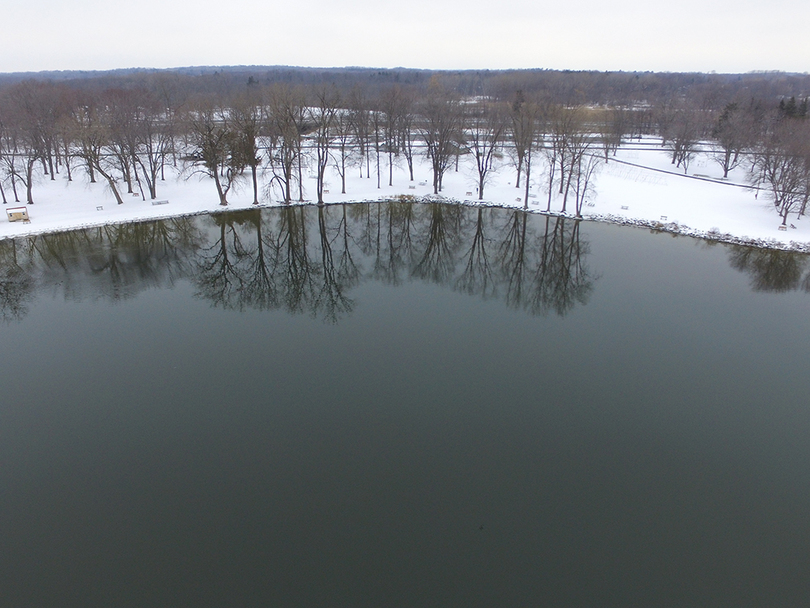SUNY-ESF administrator works to restock Onondaga Lake with state’s once abundant Atlantic salmon

Brandon Bielinski | Staff Photographer
Atlantic salmon are fish that spawn in rivers and typically spend two to three years in freshwater before then migrating to the ocean, according to the National Oceanic and Atmospheric Administration.
A SUNY-ESF administrator is working to restock Onondaga Lake — once deemed one of the most polluted lakes in the country — with New York state’s native Atlantic salmon.
Neil Ringler, the vice provost and executive director of the State University of New York College of Science and Forestry Onondaga Lake Science Center, is working with a team of graduate students to introduce young Atlantic salmon into Nine Mile Creek, a tributary of Onondaga Lake, according to NYup.com. Ringler has been working with the students on the project since 2014, per NYup.com.
This year, according to NYup.com, Ringler’s team has added about 4,000 baby salmon into the creek.
Atlantic salmon were once abundant in New York state, but overfishing and the building of dams, coupled with pollution, caused the fish to die off in the state, according to NYup.com.
“Salmon were so abundant that men stood on a log across Salmon Creek and speared them with pitchforks in the ‘fish shoal.’ Women often caught a salmon with their hands or in their aprons,” wrote Dwight Webster, a former Cornell University fishery biology professor, in a 1984 paper titled “Early History of Atlantic Salmon in New York.”
Atlantic salmon are fish that spawn in rivers and typically spend two to three years in freshwater before then migrating to the ocean, according to the National Oceanic and Atmospheric Administration. Atlantic salmon are considered one of the most highly regarded sport fish in North America and Europe, according to the New York State Department of Environmental Conservation.
“It’s hard to totally restore them, but bringing them back into the system (in Onondaga Lake) makes a lot of sense,” Ringler told NYup.com. About 2,000 to 4,000 salmon have been stocked in Nine Mile Creek each year since the project began, per NYup.com.
The possibility of restocking salmon in Onondaga Lake was unlikely until recently.
Onondaga Lake was added to the Federal Superfund National Priorities List due to large amounts of pollution in 1994. Honeywell International — the successor to Allied Corp. and the Solvay Process Company — entered an agreement in 2007 with the NYSDEC to implement a remediation plan and clean up contaminated sediments in the lake. Honeywell has dredged the lake and about 450 acres of the lake has been capped to isolate remaining contaminants, according to the Onondaga Lake Cleanup website.
“I would swim in the lake,” Onondaga County Executive Joanie Mahoney told Syracuse.com in 2015. “I think you’re going to see very quickly that it’s going to be an old conversation about not swimming in the lake.”
In 2015, the county released a report from the Upstate Freshwater Institute indicating the lake’s “northern two-thirds” are suitable for swimming, per Syracuse.com.
Brown trout stocked in Nine Mile Creek have made their way into the lake and stayed there for about 10 months out of the year, Ringler told NYup.com, meaning salmon could thrive in Onondaga Lake much like the brown trout.
Ringler told NYup.com that fishermen should not eat salmon they catch in Onondaga Lake this year, but can eat the salmon they catch in any stream.
The NYSDEC has also undertaken salmon restocking efforts. The NYSDEC has stocked young salmon in Nine Mile Creek and other waterways in the region, such as Skaneateles Creek, according to research prepared by Daniel Miller, a research assistant, and Ringler.
According to the NYSDEC, Atlantic salmon stocking programs have supported fisheries in 13 different watersheds in the state — most are centered in the Finger Lakes region and the Adirondacks — but natural spawning for the fish remains low.




